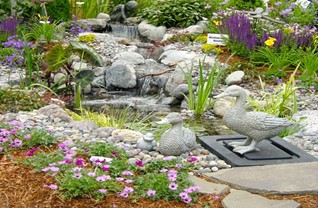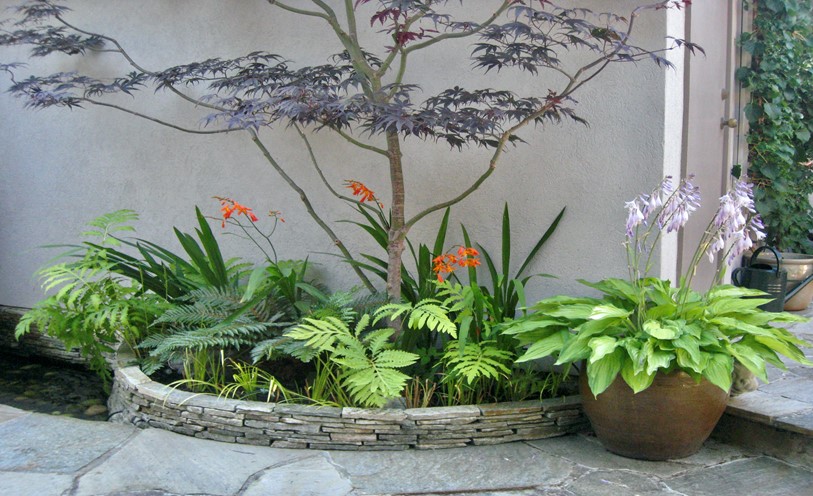A Clear Plan for Your DIY Landscape Project
Professional landscapers know how to create harmonious and balanced small gardens. If you want to do it yourself, plan as professionals do. Online garden designs and publications are good resources but remember that achieving a valuable impact on a limited space requires discipline. What’s more, new homeowners shouldn’t rush before re-landscaping, going through a year of seasons instead, and see what’s worth keeping and what’s not.
Get Ideas: Landscaping Magazines, Garden Shows, Books
Online garden designs, specialized publications, garden shows, and Pinterest will help you visualize what you could do in a small garden.
Small Garden by John Brookes proves that balconies, terraces, courtyards, and small backyards can be transformed into havens for relaxing, meditating, entertaining, or for enjoying luxuriant vegetation.
Small Spaces, Beautiful Gardens by Keith Davitt on how to rehabilitate a soulless garden by eliminating the negative, enhancing the positive, and injecting personal style.
Practical Techniques for the Home Gardener by Judith Adam is an ingenious guide with basic design techniques for small or large projects.
Western Sunset and other national gardening associations will advise you on guides specific to an area or purpose.
Steps for Planning a Small Garden
You think your small outdoor space is too limited for all you have in mind. You are probably right.
Compromise by focusing on what you need:
- Relax (by a water feature, lounging chair setting)
- Entertain (barbecue, seating area)
- Let kids play (with a sandbox, small play structure)
- Garden with flowers (place to store tools and a trimming bin)
- Grow vegetables (with raised beds, and an irrigation system)
Identify the micro-climates in your small garden:
- Sunny or shade
- Light shade (2-3 hours without direct sunlight)
- Partial shade (4-5 hours without direct sunlight)
- Exposure to wind or frost
- Protection from the rain (flowerbeds under the eaves)
Observe the existing garden, and others:
- Make a list of well-established perennial plants.
- Take a photograph of the bushes and the trees that you like in your neighborhood.
- Consider the loss of privacy in winter from deciduous trees.
- Notice the hardscape (path, arbor, fountain).
Resist the temptation of a quick makeover:
- A small garden needs a well-defined overall structure.
- A mistake with the hardscape is expensive to correct.
- An unprofessional look adds no value to a property.
Look at the garden from inside the house:
- What do you want to see from the main rooms?
- What rooms particularly need privacy?
- Where would landscape lighting add interest at night?
Collect pictures to keep your DIY vision on track:
- Pictures striking a chord, perhaps a Japanese garden bridge, or a water basin
- Ideas bookmarked in specialized publications or online landscape designs
- Clippings from garden magazines
- Photographs from trips, or from gardens with an interesting plant selection
Consider the overall budget:
- Know your budget: a small-scale landscape can be surprisingly costly.
- Keep in mind that your investment will be seen from a close look.
- Visit landscape suppliers for prices, options, and guidance
With this in mind, your next step will be to sketch the site.
First published 2010 Suite101.com


